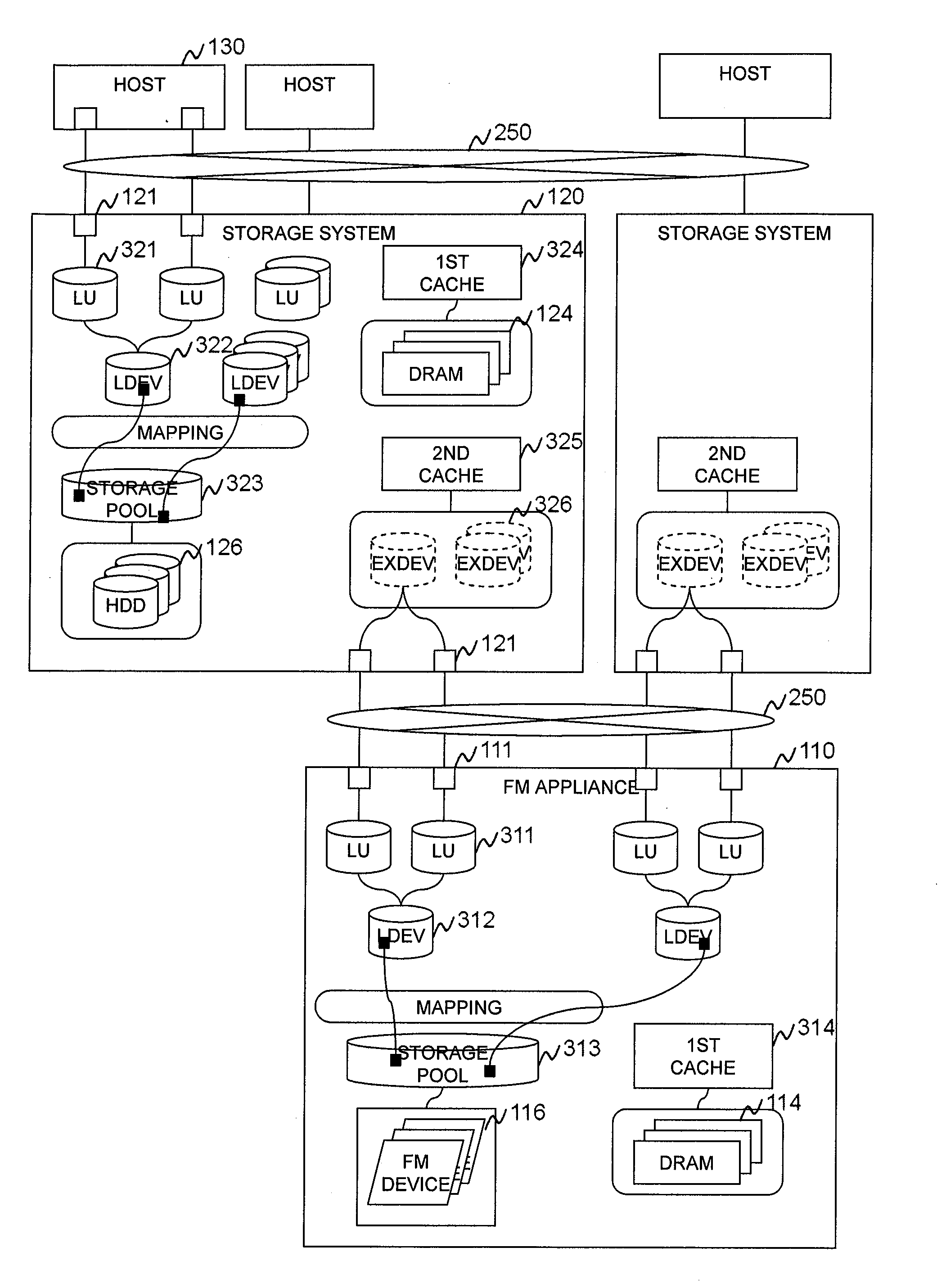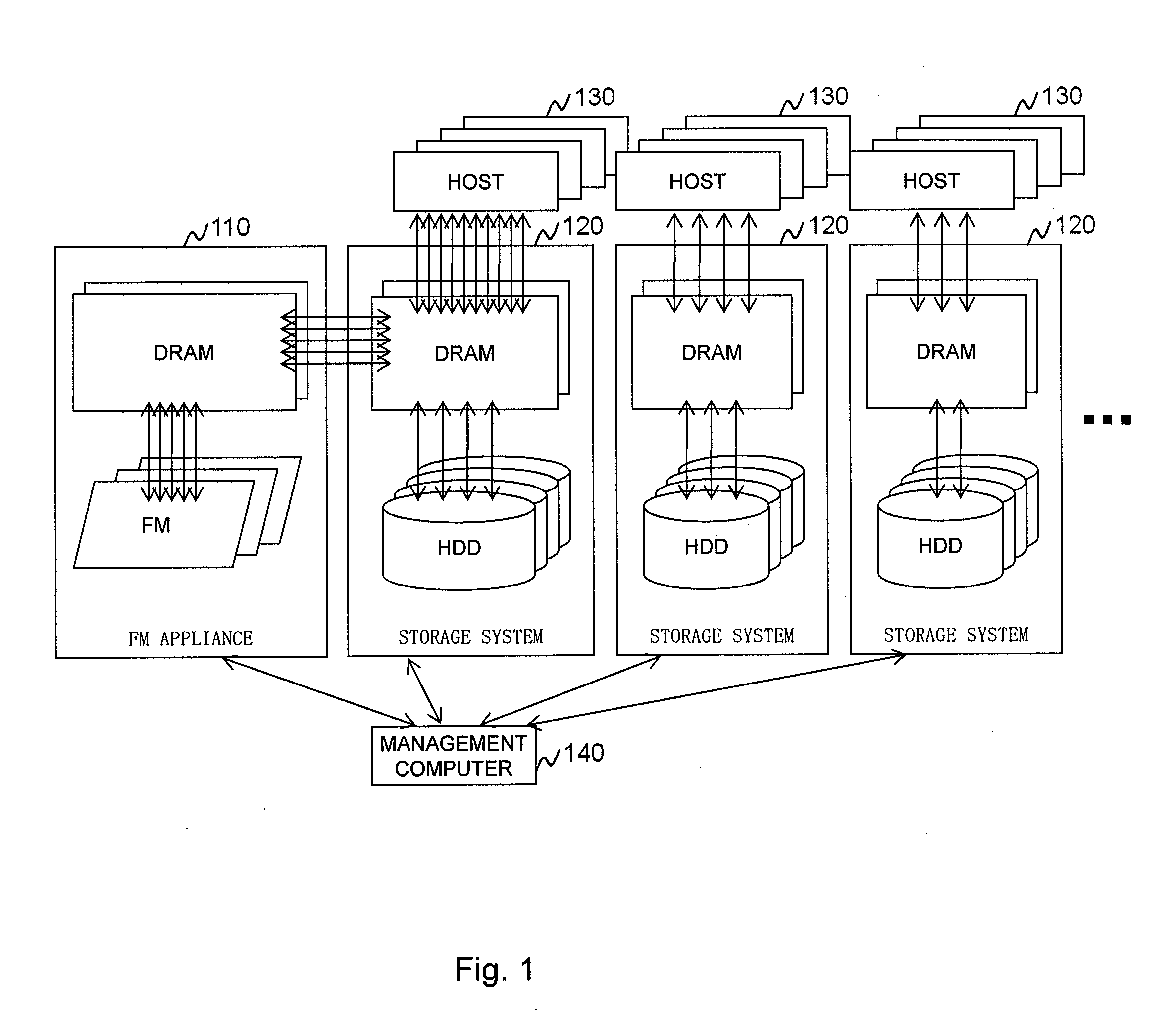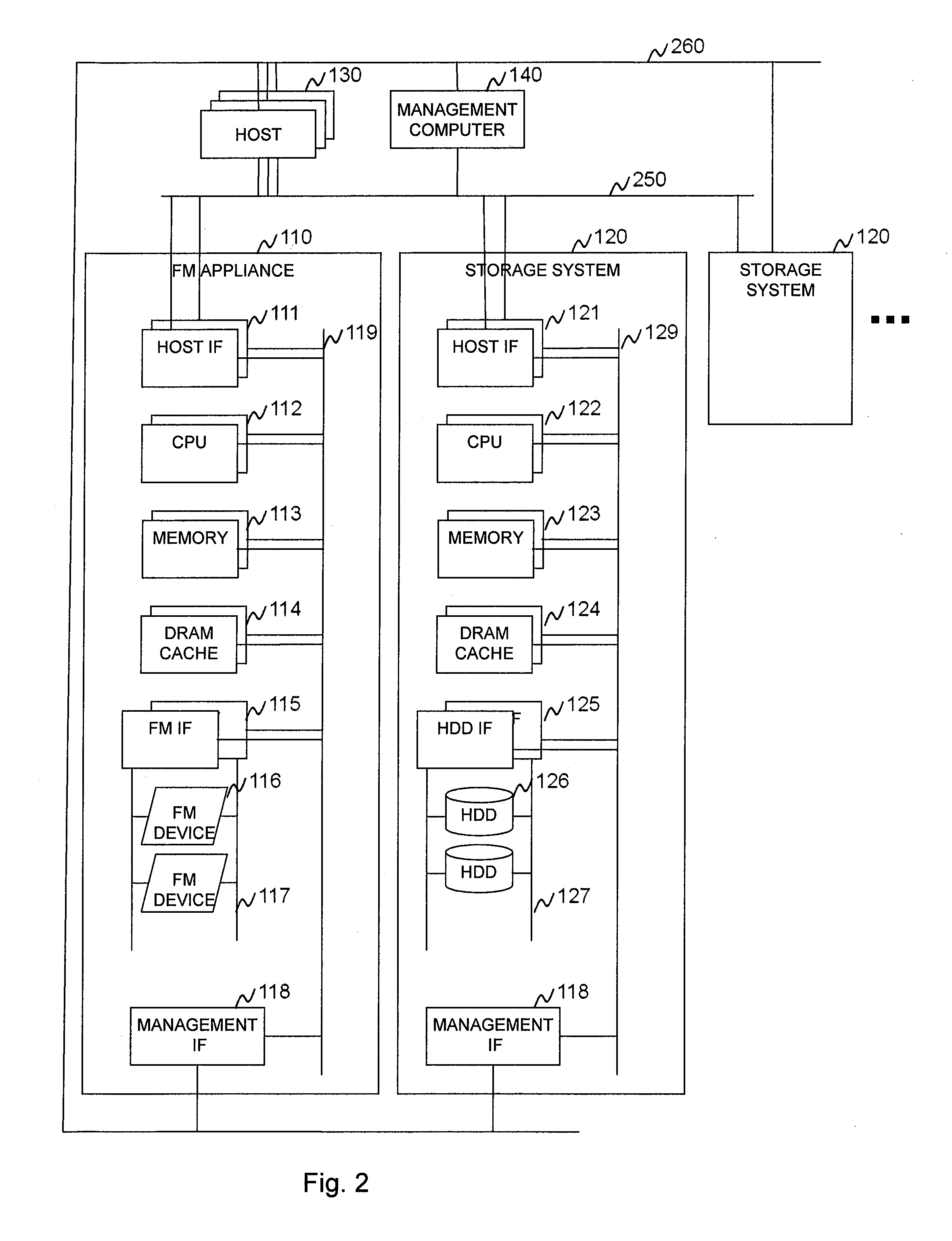Load distribution system
a load distribution and storage system technology, applied in the field of storage systems, can solve the problems of ineffective addressing of workload balancing among storage systems, ineffective approach to adding flash memory, and difficulty in determining which storage system should receive the added resource, so as to minimize non-user capacity, and improve the utilization efficiency of high-performance resources
- Summary
- Abstract
- Description
- Claims
- Application Information
AI Technical Summary
Benefits of technology
Problems solved by technology
Method used
Image
Examples
first embodiment
I. First Embodiment
[0092]FIG. 1 illustrates an example of a hardware configuration of an information system in which the method and apparatus of the invention may be applied. The information system includes a plurality of storage systems 120 and a FM appliance 110 that has high performance media devices such as flash memory (FM) devices. The appliance 110 is shared in usage by the storage systems 120. A management computer 140 collects and stores the workload information from each storage system 120 and the FM appliance 110. During normal (lower) workload, each storage system 120 processes I / O from hosts 130 inside itself. In case of high workload in a storage system 120 (amount / ratio of DRAM cache dirty data in storage system 120 becomes too much), that storage system 120 distributes the load to the appliance 110. After the high workload quiets down or subsides, the storage system 120 will stop distributing the load to the appliance 110.
[0093]FIG. 2 illustrates further details of t...
second embodiment
II. Second Embodiment
[0119]In the second embodiment, the storage system doubles as FM appliance. The storage system can have FM devices inside itself and uses them as permanent areas and / or second cache areas. In case of high workload, the storage system distributes other storage systems that have enough clean first cache area and second cache free area.
[0120]FIG. 14 illustrates an example of a hardware configuration of an information system according to the second embodiment.
[0121]FIG. 15 illustrates further details of the physical system configuration of the information system of FIG. 14 according to the second embodiment. The storage system can have FM devices inside itself and use them as permanent areas and / or second cache areas.
[0122]FIG. 21 illustrates an example of a logical configuration of the invention according to the second embodiment. Only the differences from the first embodiment of FIG. 3 are described here. The storage systems may have and use internal FM devices as...
third embodiment
III. Third Embodiment
[0128]In the third embodiment, external appliance is used as expanded first cache area.
[0129]FIG. 16 illustrates an example of a hardware configuration of an information system according to the third embodiment. In case of high workload, the storage system uses the FM appliance as expanded first cache area. The storage system directly forwards received write data to the FM appliance (internal first cache-throw).
[0130]FIG. 26 illustrates an example of a logical configuration of the invention according to the third embodiment. One difference from the first embodiment of FIG. 3 is that the first cache of the storage system in FIG. 26 consists of internal DRAM and external devices. External first cache technology written in this embodiment may also apply to the first embodiment (external device as 2nd cache) and the second embodiment (using internal FM device as permanent and second cache, storage systems use other storage systems' resources with respect to each oth...
PUM
 Login to View More
Login to View More Abstract
Description
Claims
Application Information
 Login to View More
Login to View More - R&D
- Intellectual Property
- Life Sciences
- Materials
- Tech Scout
- Unparalleled Data Quality
- Higher Quality Content
- 60% Fewer Hallucinations
Browse by: Latest US Patents, China's latest patents, Technical Efficacy Thesaurus, Application Domain, Technology Topic, Popular Technical Reports.
© 2025 PatSnap. All rights reserved.Legal|Privacy policy|Modern Slavery Act Transparency Statement|Sitemap|About US| Contact US: help@patsnap.com



